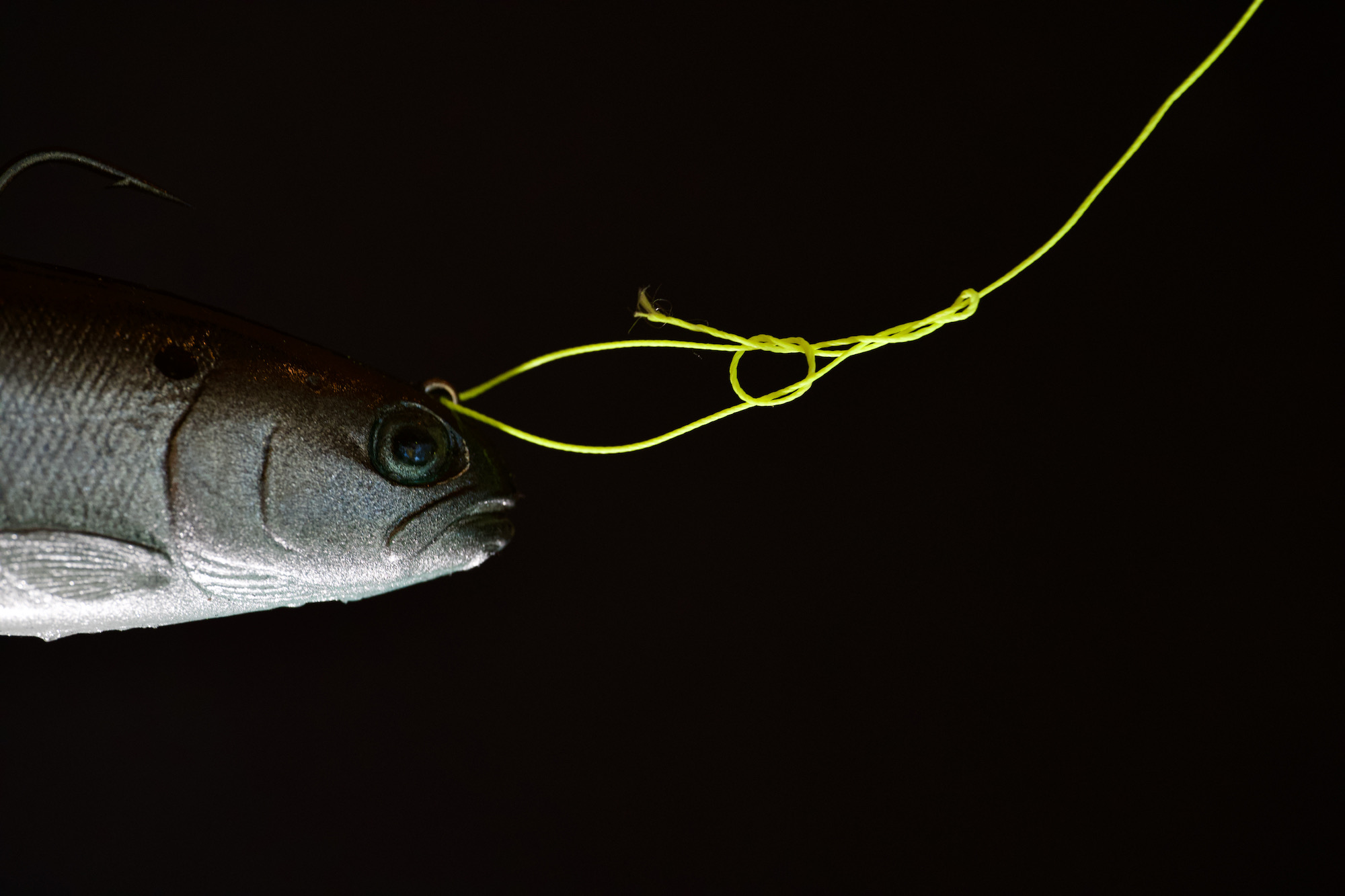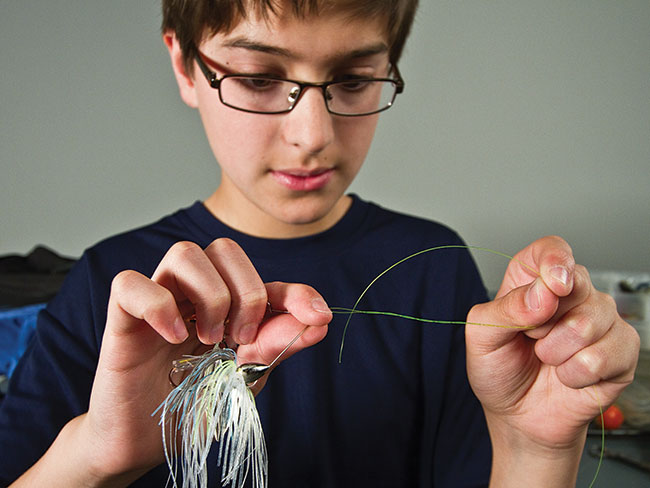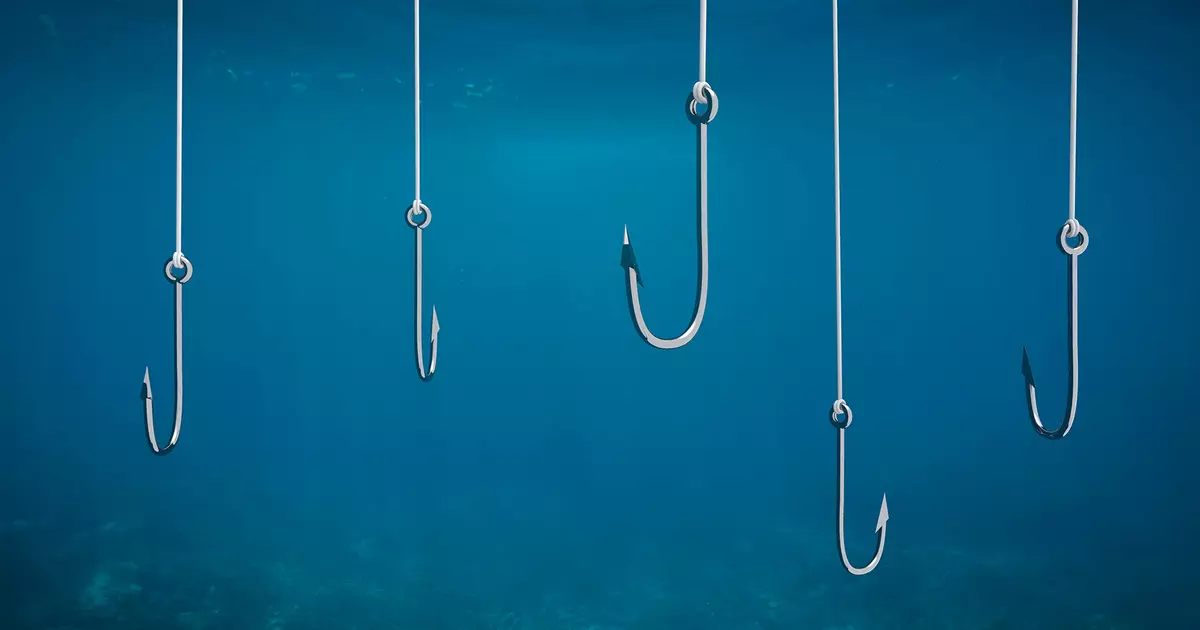
Introduction
How To Tie A Fish Hook: The art of tying a fish hook is a cornerstone skill that lies at the heart of successful fishing. Whether you’re an enthusiastic beginner or a seasoned angler, the ability to securely fasten a fish hook to your fishing line is crucial for reeling in prized catches and upholding responsible fishing practices.
The process involves a series of systematic steps that transform a simple piece of line and metal into a powerful tool to entice and capture aquatic prey. Properly tying a fish hook not only ensures a strong connection but also plays a pivotal role in preserving fish populations through effective catch and release practices.

We will delve into the intricacies of tying a fish hook knot, exploring the fundamental techniques required to secure the hook in a manner that optimizes your chances of success. From threading the line through the eye of the hook to creating tight wraps and passing through loops, each step contributes to crafting a knot that’s not only reliable but also gentle on the fish.
By the end of this guide, you’ll be equipped with the knowledge and confidence to tie a fish hook knot that can withstand the challenges of the water and enhance your overall fishing experience. Let’s embark on this journey of skill acquisition and responsible angling together.
What are the basics of a fish hook?
The Point: The point of a fish hook is the sharp end that penetrates the mouth of a fish. The Barb: The barb is the projection extending backwards from the point that keeps the fish from unhooking. The Eye: The eye is where you connect the hook to the line or lure. The Bend: The bend is the curve in the hook.
A fish hook, a fundamental tool in angling, consists of several key components that determine its effectiveness in catching fish. The basic structure comprises the point, shank, eye, barb, and bend. The point is the sharp end that penetrates the fish’s mouth, while the shank refers to the straight portion leading to the eye. The eye is the loop at the top of the hook through which the fishing line is threaded.
Crucial for securing the catch, the barb is a small projection on the shank that prevents the hook from easily dislodging once embedded in the fish’s flesh. The bend, which curves out from the shank, influences the hook’s holding capacity and the way it lodges in the fish’s mouth.
Fish hooks come in various sizes, shapes, and materials, each tailored to specific fishing methods and target species. Factors like hook size, type, and design play vital roles in determining the success of a fishing expedition. Proper understanding of these basics allows anglers to select the right hook for the situation, increase their chances of hooking fish, and promote ethical catch-and-release practices when necessary.
Which knot is the strongest?
The Palomar Knot
Uses: The Palomar Knot is a simple knot for attaching a line to a hook, or a fly to a leader or tippet. It is regarded as one of the strongest and most reliable fishing knots.
The title of the strongest knot is often awarded to the “Palomar knot.” Renowned for its exceptional strength and reliability, the Palomar knot is a popular choice among anglers, climbers, and various outdoor enthusiasts. Its simple yet effective construction contributes to its strength.
The Palomar knot is tied by first doubling the fishing line and passing it through the eye of the hook or lure. A loose overhand knot is then created, allowing the loop to pass over the hook or lure. The loop is subsequently pulled down, encompassing the hook or lure snugly. This knot’s strength stems from the double line passing through the eye, distributing the load evenly and minimizing stress points that could lead to weakening or breaking.
While the Palomar knot is celebrated for its robustness, it’s worth noting that knot strength can vary depending on the type of line, diameter, and material used. As such, it’s prudent for individuals to familiarize themselves with various knots suitable for their specific needs. Nonetheless, the Palomar knot’s reputation as one of the strongest knots remains well-deserved in the realm of fishing and outdoor pursuits.
What is the most popular fishing knot?
The Improved Clinch Knot
One of the most widely used fishing knots, the Improved Clinch Knot provides a good method of securing a fishing line to a hook, lure, or swivel.
The “Improved Clinch Knot” stands out as one of the most popular and widely used fishing knots among anglers worldwide. Its popularity can be attributed to its simplicity, versatility, and dependable performance across various fishing scenarios.
The process of tying the Improved Clinch Knot involves threading the line through the eye of the hook or lure, wrapping it around the standing line five to seven times, and then passing the tag end through the small loop formed just above the eye. The tag end is then threaded through the large loop created between the wraps and the hook’s eye. Finally, the knot is snugly secured by pulling the tag end and the standing line simultaneously.
What makes the Improved Clinch Knot so appealing is its ease of tying, making it accessible to both beginners and experienced anglers. It retains a strong grip on the hook while maintaining a relatively low profile, allowing it to pass through rod guides smoothly. While other knots offer specific advantages for particular situations, the widespread recognition and effectiveness of the Improved Clinch Knot ensure its position as a go-to choice for connecting hooks, lures, and swivels to fishing lines.
Which hook is best for fishing?
The most popular hook is an EWG Worm Hook, and the most common sizes range in 2/0-4/0. Use a 3/0 EWG Worm Hook for the majority of soft plastic Bass baits. Round Bend Worm Hooks are also a popular option and are often used in more finesse situations rigged with slender plastic worms.

Selecting the best fishing hook depends on various factors such as the type of fish you’re targeting, the fishing technique you’re using, and the bait you’re employing. Several popular hook types cater to different fishing scenarios.
For general freshwater fishing, the “Octopus Hook” is a versatile choice. Its design, featuring a slightly turned-in point, suits a wide range of baits and presentations, making it effective for catching various species like bass, trout, and panfish.
When pursuing larger game fish, the “Circle Hook” is often favored. Its unique circular shape and inward-facing point reduce the likelihood of gut-hooking, promoting safe catch-and-release practices, while still allowing for successful hooksets.
For saltwater fishing, the “Jig Hook” is renowned for its durability and strength. Designed for use with artificial lures like jigs, it’s ideal for targeting aggressive saltwater species such as tuna, snapper, and grouper.
The best hook choice hinges on understanding your fishing goals and the specific conditions you’ll encounter. It’s valuable to research and experiment with different hooks to determine what works best for your preferred fishing style and target species. Remember, matching the right hook to your fishing scenario increases your chances of success and ensures the ethical treatment of the fish population.
What is a fish hook called?
A fish hook or fishhook, formerly also called angle (from Old English angol and Proto-Germanic *angulaz), is a hook used to catch fish either by piercing and embedding onto the inside of the fish mouth (angling) or, more rarely, by impaling and snagging the external fish body.
A fish hook is simply referred to as a “hook.” This essential tool is a curved, pointed device designed to catch fish by puncturing their mouths or bodies. Hooks come in various sizes, shapes, and designs, each tailored to specific fishing methods, target species, and angler preferences.
Hooks have been used for thousands of years, evolving from natural materials like bone, wood, and thorns to modern materials such as stainless steel and high-strength alloys. The basic components of a hook include the point, which pierces the fish, the shank, the straight portion leading to the eye, and the eye itself, which is the loop where the fishing line is attached. Some hooks also have barbs near the point, which help prevent the fish from easily escaping once hooked.
Hooks are a crucial element in fishing equipment and can greatly influence an angler’s success. The right choice of hook can determine whether a fish is effectively hooked, safely released, or successfully landed. The diversity of hook types reflects the diversity of fishing techniques and the multitude of fish species that anglers pursue, making the hook a fundamental and indispensable component of angling gear.
What are the steps to tie a fish hook onto a fishing line?
Tying a fish hook onto a fishing line involves a few systematic steps to ensure a secure connection. Begin by threading the free end of your fishing line through the eye of the hook, sliding it entirely through. Make sure you leave enough line to work with.
Next, take the tag end (the loose end) and wrap it around the standing line (the main line) at least five to seven times, creating tight coils. Hold the coils in place with your thumb and forefinger.
Now, pass the tag end through the small loop that has formed above the eye of the hook. This will create a second loop, which you’ll use to pass the tag end through.
Carefully insert the tag end through the larger loop that was formed between the coils and the hook’s eye. Ensure that the tag end goes in the same direction as the wraps.
Gently tighten the knot by pulling the tag end and the standing line simultaneously. As the knot tightens, make sure it aligns neatly against the hook’s eye and the coils remain snug. Trim any excess tag end with a pair of scissors.
Practice and patience are key to mastering this knot-tying process, which is fundamental to successful fishing endeavors.
Could you explain the process of properly securing a fish hook?

Certainly, properly securing a fish hook is essential for successful and ethical fishing. The process involves a series of steps to ensure the hook is firmly attached to the fishing line.
Thread the Line: Start by threading the free end of your fishing line through the eye of the hook. Ensure that you leave a reasonable length of line to work with.
Create Wraps: Hold the tag end of the line (the loose end) and wrap it around the standing line (the main line) five to seven times. These wraps help create a solid foundation for the knot.
Pass Through Loops: Carefully insert the tag end through the small loop that forms just above the eye of the hook. This will form a second loop. Then, insert the tag end through the larger loop created by the wraps and the hook’s eye.
Tighten the Knot: Hold the hook and the tag end firmly, while gently pulling the standing line. As the knot tightens, make sure it aligns neatly against the hook’s eye, and the wraps remain snug. This is crucial for the knot’s strength and reliability.
Trim Excess: Once the knot is secure, trim any excess tag end using scissors or line cutters. Leaving a small tag end helps prevent the knot from unraveling.
Looking for guidance on how to knot a fish hook effectively?
If you’re seeking guidance on effectively knotting a fish hook, follow these steps for a secure connection that increases your chances of successful fishing:
Threading the Line: Begin by passing the free end of your fishing line through the eye of the hook. Allow ample length of line to work with, ensuring you have enough for the knot.
Creating Coils: Hold the tag end of the line (the loose end) and wrap it around the standing line (the main line) around five to seven times. These wraps provide the foundation for a strong knot.
Passing the Tag End: Carefully insert the tag end through the small loop formed just above the eye of the hook. This will create a second loop adjacent to the eye.
Through the Wraps: Gently guide the tag end through the larger loop created between the wraps and the hook’s eye. Make sure the tag end goes through in the same direction as the wraps.
Tightening and Trimming: Hold the hook and the tag end firmly while slowly pulling the standing line to tighten the knot. Ensure the knot is snug against the eye and the wraps. Trim any excess tag end, leaving a small amount to prevent the knot from unraveling.
By mastering this knot-tying technique, you enhance your angling success. An effectively knotted fish hook not only improves your chances of hooking fish but also contributes to ethical fishing practices, as a secure knot minimizes harm to the fish during both the catch and release stages.
What’s the proper way to attach a fish hook to my fishing line?
Attaching a fish hook to your fishing line correctly is essential for a successful and efficient angling experience. Here’s the proper method to secure a fish hook effectively:
Threading the Line: Begin by passing the free end of your fishing line through the eye of the hook. Allow enough excess line for creating the knot.
Creating Wraps: Hold the tag end (the loose end) and wrap it around the standing line (the main line) about five to seven times. These wraps provide the foundation for a sturdy knot.
Passing Through Loops: Carefully insert the tag end through the small loop formed above the eye of the hook. This action will create a second loop adjacent to the hook’s eye.
Guiding Through the Wraps: Gently guide the tag end through the larger loop created between the wraps and the hook’s eye. Ensure the tag end goes through in the same direction as the wraps.
Tightening the Knot: Hold the hook and tag end securely while slowly pulling the standing line to tighten the knot. Make sure the knot settles snugly against the hook’s eye and the wraps are neatly aligned.
Trimming Excess: Once the knot is secure, trim any excess tag end using scissors or line cutters. Leave a small amount to prevent the knot from unraveling.
Following these steps ensures your fish hook is firmly attached, enhancing your chances of hooking and landing fish successfully. A properly attached hook promotes responsible angling, safeguarding both your fishing experience and the well-being of the fish population.
Can you outline the technique for tying a fish hook knot?
Certainly, tying a fish hook knot involves a series of steps to ensure a secure attachment between the hook and the fishing line. Here’s an outline of the technique:
Threading the Line: Begin by passing the free end of your fishing line through the eye of the fish hook. Leave enough excess line for knotting purposes.
Creating Wraps: Hold the tag end of the line (the loose end) and wrap it around the standing line (the main line) about five to seven times. These wraps form the foundation for a strong knot.
Passing Through Loops: Gently insert the tag end through the small loop formed above the hook’s eye. This action will generate a second loop adjacent to the hook’s eye.
Guiding Through Wraps: Carefully guide the tag end through the larger loop created between the wraps and the hook’s eye. Ensure the tag end goes through in the same direction as the wraps.
Tightening the Knot: Hold the hook and tag end securely while slowly pulling the standing line. As the knot tightens, make sure it rests snugly against the hook’s eye and the wraps remain well-aligned.
Trimming Excess: Once the knot is secure, trim any excess tag end using scissors or cutters. Leave a small portion to prevent the knot from unraveling.

Conclusion
Mastering the art of tying a fish hook is a fundamental skill that can significantly impact your angling success and contribute to ethical fishing practices. The step-by-step process involves threading the fishing line through the hook’s eye, creating tight wraps around the standing line, passing the tag end through loops, and ultimately securing the knot.
A properly tied fish hook knot ensures a secure connection between your fishing line and the hook, increasing the likelihood of successfully hooking and landing fish. This skill is essential for both beginners and experienced anglers, as it forms the foundation of a productive fishing experience.
Beyond its practical implications, mastering the technique of tying a fish hook knot reflects a commitment to responsible angling. A well-tied knot minimizes the chances of injuring the fish during the catch and release process, promoting conservation efforts and the sustainability of fish populations.
By diligently practicing and refining your knot-tying skills, you not only enhance your ability to reel in impressive catches but also contribute to the preservation of aquatic ecosystems. Remember, the journey of becoming proficient in knot tying is a continuous one, leading to greater enjoyment and fulfillment in your fishing endeavors.

